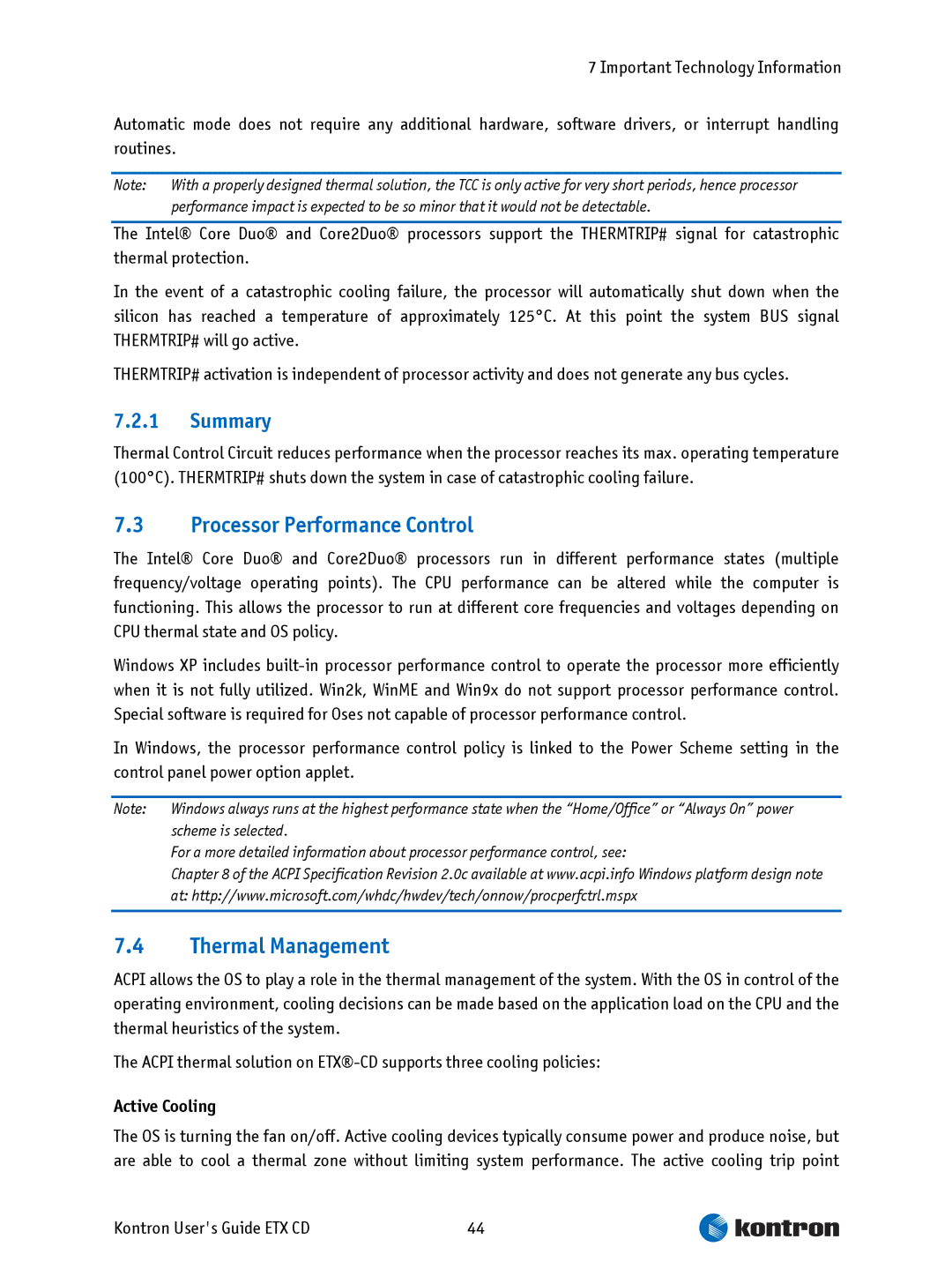
7 Important Technology Information
Automatic mode does not require any additional hardware, software drivers, or interrupt handling routines.
Note: | With a properly designed thermal solution, the TCC is only active for very short periods, hence processor |
| performance impact is expected to be so minor that it would not be detectable. |
The Intel® Core Duo® and Core2Duo® processors support the THERMTRIP# signal for catastrophic thermal protection.
In the event of a catastrophic cooling failure, the processor will automatically shut down when the silicon has reached a temperature of approximately 125°C. At this point the system BUS signal THERMTRIP# will go active.
THERMTRIP# activation is independent of processor activity and does not generate any bus cycles.
7.2.1Summary
Thermal Control Circuit reduces performance when the processor reaches its max. operating temperature (100°C). THERMTRIP# shuts down the system in case of catastrophic cooling failure.
7.3Processor Performance Control
The Intel® Core Duo® and Core2Duo® processors run in different performance states (multiple frequency/voltage operating points). The CPU performance can be altered while the computer is functioning. This allows the processor to run at different core frequencies and voltages depending on CPU thermal state and OS policy.
Windows XP includes
In Windows, the processor performance control policy is linked to the Power Scheme setting in the control panel power option applet.
Note: | Windows always runs at the highest performance state when the “Home/Office” or “Always On” power |
| scheme is selected. |
| For a more detailed information about processor performance control, see: |
| Chapter 8 of the ACPI Specification Revision 2.0c available at www.acpi.info Windows platform design note |
| at: http://www.microsoft.com/whdc/hwdev/tech/onnow/procperfctrl.mspx |
|
|
7.4Thermal Management
ACPI allows the OS to play a role in the thermal management of the system. With the OS in control of the operating environment, cooling decisions can be made based on the application load on the CPU and the thermal heuristics of the system.
The ACPI thermal solution on
Active Cooling
The OS is turning the fan on/off. Active cooling devices typically consume power and produce noise, but are able to cool a thermal zone without limiting system performance. The active cooling trip point
Kontron User's Guide ETX CD | 44 |
